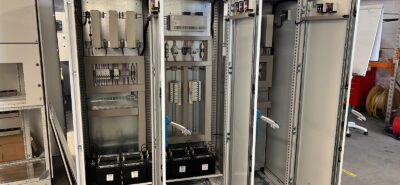How Important are Battery Tripping Unit for Switchgear
Battery tripping units (BTUs) are crucial components for the reliable and safe operation of switchgear, particularly in critical electrical systems. Below, I’ll outline their importance and why they are indispensable in various applications:
1. Ensuring Reliable Operation During Power Loss
One of the primary functions of a battery tripping unit is to provide a reliable source of power to trip circuit breakers in the event of a power failure or an emergency. Here’s why this is critical:
- Uninterrupted Tripping Power: In case of a power outage, the BTU ensures that the circuit breakers can still operate to isolate faults or disconnect loads, thus preventing potential damage to equipment and maintaining safety.
- Fault Isolation: Rapid isolation of faults is essential to prevent cascading failures and ensure that only the faulty part of the system is isolated, maintaining the operation of the rest of the electrical network.
2. Enhancing Safety
Battery tripping units significantly enhance the safety of electrical systems in several ways:
- Protection Against Electrical Hazards: In the event of a fault, such as a short circuit, the BTU ensures that breakers trip quickly, reducing the risk of fire, equipment damage, or even personal injury.
- Emergency Situations: During emergency situations where power loss may compromise system safety, the BTU provides a fail-safe mechanism to disconnect critical components and protect personnel and infrastructure.
3. Supporting Critical Applications
BTUs are especially vital in applications where maintaining electrical system integrity is crucial:
- Industrial Facilities: In industries such as manufacturing, petrochemical, and mining, quick disconnection of electrical power in case of faults is essential to protect machinery and prevent operational downtime.
- Healthcare Facilities: Hospitals and healthcare centers rely on BTUs to ensure that critical electrical systems, such as life-supporting equipment and emergency lighting, can be safely disconnected during faults without compromising patient safety.
- Data Centers: In data centers, preventing downtime and protecting sensitive equipment from electrical faults is paramount. BTUs help ensure that faults are quickly isolated, protecting servers and data integrity.

4. Compliance with Standards
Battery tripping units help facilities comply with various electrical safety standards and regulations, such as:
- IEC and IEEE Standards: Compliance with these international standards often requires reliable mechanisms for fault isolation and power disconnection, which BTUs facilitate.
- Local Electrical Codes: Adhering to local electrical safety codes and regulations is essential for operational legality and insurance purposes. BTUs are often required to meet these stringent safety requirements.
5. Backup Power for Essential Functions
In addition to tripping breakers, BTUs provide backup power for other critical functions in switchgear systems:
- Control and Monitoring Systems: BTUs can provide power to control systems, enabling operators to monitor and manage the electrical network even during power outages.
- Emergency Systems: They ensure that emergency lighting and alarms remain operational, guiding personnel safely out of hazardous situations.
6. Minimizing Downtime and Equipment Damage
By ensuring that circuit breakers can trip even during a power failure, BTUs help minimize downtime and prevent equipment damage:
- Fast Fault Response: The ability to rapidly disconnect faults reduces the likelihood of extensive damage to electrical components and machinery.
- Operational Continuity: Minimising downtime is critical in environments where even short interruptions can lead to significant operational and financial losses.
7. Flexibility and Customization
Battery tripping units offer flexibility in design and application:
- Customizable Solutions: BTUs can be tailored to specific needs, including voltage levels (e.g., 24V, 30V, 48V, 110V) and battery capacities (e.g., from 5Ah to 200Ah), making them suitable for a wide range of applications.
- Integration with Existing Systems: They can be integrated with various types of switchgear and electrical systems, providing a seamless solution for enhancing safety and reliability.
Conclusion
Battery tripping units are essential for the safe and reliable operation of switchgear systems. They provide a critical safety net during power outages, ensure rapid fault isolation, support compliance with safety standards, and protect both personnel and equipment. Whether in industrial facilities, healthcare settings, or data centers, BTUs play a key role in maintaining electrical system integrity and operational continuity. Investing in high-quality battery tripping units is a prudent decision that can enhance safety, reduce downtime, and prevent costly damage to equipment.



